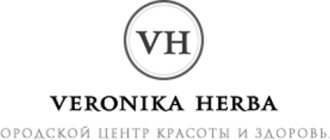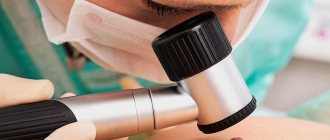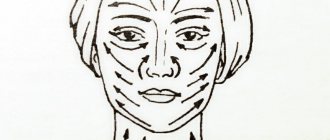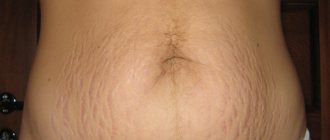When purchasing equipment, choose a distributor
Once you have decided on the main purpose of purchasing equipment, it is time to select a supplier, and we hope that this table will be useful to you in this.
| Indicators for cooperation | Comments |
| 1. Reputation of the distribution company | Allows you to avoid risks and instills confidence in long-term partnership cooperation that is beneficial for the clinic. It is useful to find out reviews from colleagues who have already worked with the company you are choosing. |
| 2. Manufacturer information | It is useful to know the following about the manufacturing company: • market share of its equipment in the world; • popularity of the manufacturer's brands; • whether the manufacturer regularly upgrades previously released equipment; • number of studies assessing the safety and effectiveness of procedures (degree of reliability of information). |
| 3. Availability of approval and permitting documents | To conduct business legally and meet official requirements, you must have a Roszdravnadzor registration certificate for the device and a declaration of conformity. The most rigorous test for the safety and effectiveness of a medical device is FDA approval*. |
| 4. Cost of operation | When selling equipment, the distributor is obliged to warn the buyer about the presence of hidden and obvious consumables, which significantly affects the cost of operating the device. The ideal situation is when the warehouse of these materials is located on the territory of the Russian Federation. |
| 5. Testing equipment to determine its capabilities | We recommend that people making a decision visit the distributor’s clinic with a specialist and a patient (model) to evaluate three main indicators: effectiveness, comfort and safety. |
| 6. Commercial terms | You need to understand what opportunities the supplier has when selling equipment. The flexible approach consists of the following: • various acquisition methods (for example, leasing); • sale of new and used equipment; • trade-in. |
| 7. Engineering service | It is especially important to have a service center with qualified engineers in Russia and a warehouse of spare parts, which ensures the speed of restoration of the device’s functionality and the ability to obtain replacement devices in case of long-term repairs. |
| 8. Professional medical training of specialists | The cost of the device must include mandatory initial free medical training for clinic specialists. It is important to teach doctors to choose the right indications, use recommended treatment protocols, and combine new methods with already known ones. As practice shows, initial training of specialists alone is not enough, since with the acquisition of experience, clinic doctors have many additional questions. For these purposes, the distributor’s training center with an educational license and participation in the CME system** will easily solve any current problems. Specialized teaching aids, treatment protocols and textbooks for each device are of great practical benefit. |
| 9. Marketing support | Each clinic will certainly benefit from already successful marketing materials and the experience of their use by other clinics in partnership with the distributor. |
| 10. Business training and business support | Ask what opportunities exist for training administrators in order to increase the conversion of applications (leads) into procedures, whether there are business training courses for doctors and procedure sales specialists, whether there are business programs for managers (for example, in personnel management, recruiting and adaptation new employees). |
| 11. Legal support | Distributors with their own clinics and hundreds of experienced partner clinics gain experience and are ready to share it. This is of particular importance for minimizing a variety of legal risks in the clinic’s activities. |
* FDA, Food and Drug Administration - an agency of the US Department of Health and Human Services, the Food and Drug Administration, including responsibility for the safety and effectiveness of the use of medical devices.
**Continuing medical education.
At Premium Aesthetics you can purchase the following types of cosmetology equipment:
|
|
Trends in hardware cosmetology
The dynamics of the hardware cosmetology market in Russia can be monitored by indirect indicators, for example, such as search queries in Yandex and Google. Thus, in 2022, the leader in the number of requests was the word “epilation” - 5,233,753, and over the past year the number of requests has increased by 30 percent. The frequency of the request “laser hair removal” over the past 8 months has increased by 46.4 percent, which indicates the recognition and demand for this hardware method of hair removal.
The number of searches for “melanoma” in 2022 amounted to 1,319,252 (more than “facelift”!), and in the first half of 2019 increased by 16 percent. The dynamics of requests for “melanoma” are presented in Figure 1. At the same time, the interest of aesthetic medicine clinics in diagnostic equipment remains low, but this is a missed opportunity!
Rice. 1. Dynamics of requests for “melanoma”
Doctors at aesthetic medicine clinics are dermatologists by their main profession. They are more likely than others to deal with skin problems on the face and body of patients who are already interested and ready to pay for professional services.
The introduction of diagnostic services for any dermatological diseases and dyschromia into the clinic’s portfolio will increase the professional responsibility of dermatocosmetologists, as well as the status of the clinic.
Contraindications to procedures
But before carrying out cosmetic procedures using special devices, it is worth studying the list of contraindications so as not to harm the skin and the body as a whole. Each device has its limitations, but most of them cannot be used if:
- The presence of malignant neoplasms - hardware exposure can stimulate cell growth, and this can lead to a deterioration of the condition;
- Exacerbation of herpes;
- Scratches, wounds, abrasions and inflammation on the skin;
- Fungal infection in areas that were planned to be treated;
- Autoimmune diseases;
- Serious pathologies of internal organs, heart, blood vessels;
- Using a pacemaker;
- Taking certain medications.
Particular care should be taken during pregnancy and breastfeeding. It is better to consult a doctor about this or that procedure.
What kind of equipment is there based on the purpose of its use in aesthetic medicine?
Equipment to attract new clients
Its procedures are popular, but may not be profitable enough, since the cost of the procedure is predominantly dictated by the market (for example, laser hair removal). In this case, the price of the device is not important, the payback time is not critical, since the margin is included in the cost of other procedures to which the patient is converted in the clinic. This equipment is primarily a tool for attracting clients to the clinic. When choosing it, what is important is the popularity of the services on the market, the loyalty of patients (they should like the result), course application and the possibility of carrying out a test procedure - a “test drive”.
Equipment “for making money” (highly profitable)
In this case, the price of the device and the marginality of one procedure are important. The payback period usually ranges from 8 to 16 months. Reliability in operation and effectiveness in treatment are welcomed. The possibility of a “test drive” is important. A striking example is the M22 multifunctional platform.
“Niche equipment”, which is present in a limited number of clinics
It is mostly “aggressive”, but at the same time highly effective and requires highly qualified specialists. This allows you to create a premium price for the procedure and receive a high marginal income. This group of equipment is characterized by low market saturation and attractiveness for VIP patients. DIAGNOSTIC EQUIPMENT. Emphasizes the qualifications and status of the clinic. The payback time is not critical, since the margin is included in the cost of the procedures that the patient will receive as a result of the diagnosis. With its help, sales of expensive procedures, according to statistics, grow by more than 30 percent. The presence of this equipment is an excellent opportunity to hold client days with the goal of converting patients to specific procedures. Another advantage of such devices is the ability to document results in order to avoid conflict situations with patients prone to extremism.
New unique equipment
An example is an apparatus that operates on principles that have not previously been used. At one time, these were the first devices for fractional photothermolysis, RF lifting, and cryolipolysis. An excellent example of such a device today is Vaser, a multifunctional surgical complex for ultrasonic body liposculpture and complex body contouring procedures. The main goal of such equipment is not just to “skim the cream,” but to gain additional market share in the form of a new flow of patients. The high price and marginality of the procedure are important.
The speed of return on investment is more important than the price of the device
Let's start from goals. At a forum for clinical managers in 2019, several speakers voiced the idea that there are different approaches to assessing the return on investment of equipment. Conventionally, two groups of devices can be distinguished. One group may be called “equipment for making money”, the other – “equipment for attracting new and retaining regular customers”.
For the first group, the speed of payback and high marginality of procedures are fundamentally important. The main characteristics of this group are high popularity and effectiveness, when the result is noticeable to the patient after the first procedure. Examples of equipment from the first group are IPL systems and fractional lasers, both ablative and non-ablative.
For the second group, the payback rate is not so relevant, since the main margin is formed when primary patients are converted from this procedure to other clinic services. This equipment can completely ensure a sufficient workload for estheticians (as prescribed by doctors and under their strict control). A typical example is lasers for hair removal, as well as the multifunctional platform GeneO+ (“Geneo”).
We determine the pricing policy
The cost and implementation price of the procedure clearly affect the rate of return on investment. Accordingly, clinics that operate in the economy segment set a minimum price for the procedure. Premium segment clinics can afford high prices and receive higher marginal income. In our experience, the range of prices for the same procedure in the same city can be significant. For example, the price of full body mapping (when a map of all formations on the skin is created, and there can be 100, 300 or more) in one clinic is 8,500 rubles, and in another – 40,000 rubles.
We train staff to sell procedures
No matter how great the device is, it is just a tool in the hands of people. Only well-trained, experienced, thoughtful and inspired doctors can achieve the best results. When a clinic buys a device with a course type of treatment, doctors and specialists must be taught to recommend courses of procedures, that is, converted into a course. Can every company offer such training as part of its service package?
An example is the case of a large clinic in Rostov-on-Don, when the clinic approached us with a request to teach doctors how to sell procedures using the M22 device in courses. In just one day, the business coach, together with doctors, developed an algorithm for converting patients through a “test drive.” As a result, the number of procedures on the M22 device increased 4 times. Doctors and patients are happy, and managers appreciate the quick return on investment.
Another important factor is the ability of administrators not only to sign up a patient for a procedure, but to ensure that the patient attends the clinic. Today, on average, 60 to 80 percent of patients who respond to an advertisement agree to make an appointment, but only 20 to 35 percent come to the clinic. From experience, we can say that an increase in the conversion of an application (lead) into a visit for a procedure by only 5 percent (for example, from 30 to 35 percent) brings the clinic about 100 thousand rubles in revenue every month.
The manager and chief physician play a huge role in the payback of the devices. It is advisable to include control of the following factors in their area of responsibility.
For managers of clinics and beauty salons, Table 1 is a guideline for the distribution of areas of responsibility within the organization. Guided by this material, it is easy to set tasks and evaluate their implementation.
Table 1.
| Factor | Index | Responsibility |
| Advertising quality | Number of applications (leads) per month | Marketer |
| Choosing a placement channel and adapting the key message | Number of applications (leads) per month | Marketer |
| Converting an application (lead) into a procedure | Example: Clinic visits accounted for 40 percent of the number of leads in a particular month | Administrators or call center operators |
| Sales of subscriptions for simple and popular course procedures | Number of subscriptions sold per month | Administrators and estheticians |
| Diagnostics and consultation | Number of diagnostic procedures performed per month | Doctors |
| Conversion of a patient to a course of complex procedures | Number of patients who underwent the second (third) procedure with a particular doctor | Doctors |
| Customer Satisfaction Check | NPS** score of 8 or more (on a 10-point scale) | Administrators |
| Quality of management regarding the operation of new equipment | Indicator of the production workload of the device and the number of doctors (specialists) working on it | Supervisor |
| Quality of management | Management quality indicators | Supervisor |
* NPS index (Net Promoter Score) is an index for determining consumer commitment to a product or company (index of willingness to recommend).
Hair beauty at home
Salon hair care is also possible at home. Among the devices needed for such procedures, you can choose:
- Hairdryer with diffuser, ionization, accelerated drying function and cold air supply for styling (Beurer HC 80);
- Hair dryer brush for drying and styling with ceramic coating to protect hair from overheating (Beurer HT 80);
- Brush for detangling, smoothing, combing hair with the function of strengthening it (Beurer HT 10);
- Multi-styler for creating a wide variety of hairstyles without going to the hairdresser (Beurer HT 60);
- Straightener with heat level control to protect hair from damage (Beurer HS 60).
All these devices are simple and easy to use, they allow you to achieve a good effect without extra effort, and spend the saved time on relaxation, hobbies and other pleasant things.
Features of body care
You can also take care of your body at home, for example, using special brushes. The long handle, like the Beurer FC 25, allows you to cleanse the skin on your back, and the FC 55 Pureo Complete Cleansing brush comes with two attachments: a regular brush and an exfoliating brush.
Anti-cellulite massagers will help to significantly improve the condition of your skin. They effectively combat the appearance of “orange peel”, stimulate lymph flow and blood supply, accelerate cell regeneration and give skin elasticity. For this purpose, the Beurer CM 50 massagers with special rollers and adjustable massage speed, the Cellulite Releazer compact, which tightens deep tissues and promotes the breakdown of fat, as well as the MG17, a mini SPA massager with a peeling attachment that is convenient to take with you on trips, are suitable.











